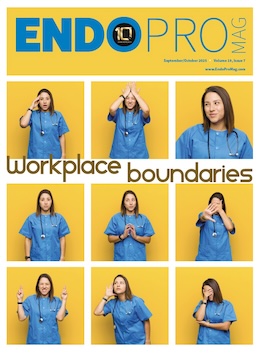Medical journals are no strangers to receiving letters. However, one letter that arrived recently at several journals was extremely unusual. The letter was from the United States Department of Justice.
“We were surprised,” said Dr. Eric Rubin, editor-in-chief of The New England Journal of Medicine, in an interview with National Public Radio (NPR). Rubin said the letter came from a U.S. attorney for the District of Columbia.
According to NPR, the letter asked about “misinformation, competing viewpoints and the influence of funders such as advertisers and the National Institutes of Health.” Such letters were also sent to JAMA, Obstetrics & Gynecology, CHEST, and possibly others. “The public has certain expectations, and you have certain responsibilities,” the letter added, with a request for response by May 2. The letter mentioned that the journal has tax-exempt status.
“It does feel like there’s a threatening tone to the letter, and it is trying to intimidate us,” Rubin told NPR. “We were concerned because there were questions that suggested that we may be biased in the research we report. We aren’t. We have a very rigorous review process. We use outside experts. We have internal editors who are experts in their fields as well. And we spend a lot of time choosing the right articles to publish and trying to get the message right. We think we’re an antidote for misinformation.”
I find it very concerning that government agencies would attempt to influence or intimidate medical publications through threatening correspondence. Such actions set a dangerous precedent and compromise the objective evaluation of healthcare interventions, treatments and policies. The staffs of medical journals ensure that research meets rigorous standards of methodology, peer review, and ethical conduct—there’s no need for government agencies to pollute this process.
The peer-review system exists precisely to insulate scientific evaluation from external pressures, whether political, commercial, or ideological. It’s not a perfect process, and there have been troubling incidents over time, but these instances are few and far between. We can trust the vast majority of research printed in reputable journals. In these publications, editors and reviewers assess research based on methodological rigor, statistical validity, and contribution to medical knowledge—not on whether findings align with any current political preferences. This independence has enabled medical science to advance treatments for cancer, develop vaccines that have saved millions of lives, and establish safety protocols that protect patients worldwide.
Government threats, such as the aforementioned letters, may chill the research environment itself. Scientists may become reluctant to pursue research or report findings that could attract government scrutiny. Yes, government agencies often have legitimate interest in understanding research findings, but feedback should be shared through appropriate channels such as public-comment periods, advisory committees, and transparent regulatory processes—not through an effort to intimidate publishers.
I hope the medical journals contacted by the DOJ will continue to resist pressure. I imagine they will. Patient lives, public health, and the integrity of American medical science all depend on maintaining the independence that has made American medical journals among the most respected and influential in the world. The leaders of such journals deserve our trust and support.
In far less controversial news (although somewhat related, since we’ve essentially been discussing boundaries), I hope you’ll enjoy our cover story about setting boundaries at work. This piece explores relationships with sometimes-difficult colleagues, bosses and patients. That topic is accompanied by articles that tackle setting boundaries with a different challenge: noise and distractions. This package begins on page 18. Lastly, you’ll see a familiar name in one of our editorial departments this issue. Our longtime Infection Prevention Now author Nancy Haberstich’s column is filling in for AfterCare’s Patricia Raymond while she’s on break. Nancy’s column is about antibiotic resistance. I wish this topic weren’t still relevant, but unfortunately, it is. You can find the column on page 28.








